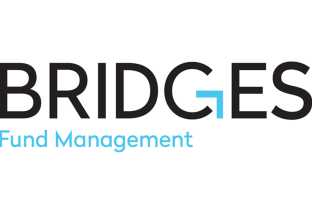Looking around a Harvard Business School classroom, you will find students who bring a diverse range of experiences, skills, and perspectives to the conversation. That can include diverse abilities; those that are physical and mental, visible and invisible. It is the varied backgrounds of the HBS classes that make the educational experience rich and productive, and graduates bring these benefits to the organizations they work for throughout their careers. But in order to add value to an organization, they must first navigate the recruiting process, which can present challenges that, while unintentional, nevertheless create boundaries to employment.
We asked four HBS alumni with diverse abilities to share their perspective on recruiting, both as candidates and as hiring managers, recruiters, and interviewers. The advice they share for recruiting partners on how to create inclusive recruiting practices for candidates with diverse abilities is designed to welcome candidates into the recruiting process and foster their success while establishing a more equitable and effective process for all.
Communicate Transparent Processes
A common theme among candidates of diverse abilities is the importance of transparency in the recruiting process.
For Meredith Hamilton (MBA 2008), clear expectations helped her navigate recruiting as a student with Bipolar Disorder and ADHD who understood that managing her hypomanic and depressive episodes would be critical. “When the company shared the schedule in advance -- ‘You’re going to show up at this time; you're going to meet with these people; this is when you'll have a break' -- that gave me a sense of what the experience was going to be like and allowed me to prepare myself for that,” Hamilton said.
Hamilton believes there is a connection between transparency and equity, especially when there are unavoidable power dynamics, like in the recruiting process. “One of the ways to dismantle power structures and invite people to be their authentic selves is to proactively share information with candidates in advance of their interviews. Help people understand what is going to happen, who they'll meet, what you’re looking for, and how you’re evaluating candidates. This creates an environment where people can understand what is expected and potentially ask for accommodations.”
Have Authentic & Honest Conversations
Transparency also extends to authenticity during the interview itself. “The more authentic the company is, the easier it is for the student to understand if their natural brain and body works in this environment,” Hamilton said.
For example, if a company culture will be high intensity, it’s appropriate and helpful for the interview process to mirror that. Or if there will be periods of consistent pace followed by times of deadline driven pressure, that should be clearly explained. Candidates know themselves and their work styles and want to set themselves up for success by choosing companies that are a fit for their specific skills and style.
Employers can also seek to create environments that celebrate authenticity and honesty where candidates can feel comfortable disclosing their diverse abilities. One way to do that is by exposing students and alumni to examples of success. Triston Francis (MBA 2019) has been active in sharing his story about building his career with dyslexia and has found that anything employers can do to try and get stories out there and in front of students and alumni is helpful. Seeing others with diverse abilities be successful in the work environment signals how a company encourages employees to bring their full selves to work and highlights the available support systems.
Offer Alternative Application Processes
Companies can also review their application processes to identify opportunities to be more inclusive. For example, Francis recalled a business school application that asked a question about what the candidate does to advance diversity. Giving candidates an opportunity to answer a question like this as part of a job application creates space for applicants to discuss various forms of diversity and how their lived experience will benefit the organization.
Hamilton also noted there is an issue with ways of hiring that force candidates into self-expression that may not suit a candidate, and said there are other equally effective methods for gathering input when considering individuals for roles. “In one of my recent jobs, we started creating an option to do a video, audio, or written submission so we weren’t forcing people into a particular structure that may or may not have been right for them,” she said.
Be Intentional About Your Interviews
When building out an interview process, employers need to consider the what, the how, and the who. What they will be evaluating candidates on, how they will assess candidates, and who will be doing the evaluations. To create a more inclusive recruiting process for candidates with diverse abilities, be intentional about all three factors.
First, consider what you are measuring for. Make sure that the job description itself is focused on what is required to do the job well instead of including factors not critical to success that may discourage diverse candidate from applying.
Then with clear success factors in mind, plan a line of questioning that provides that specific information. As Director of HR for Netflix Animation Studio, Aaron Mitchell (MBA 2011) ensured that each round of interviews was focused on a theme related to a value of the company or capability for the role so that even if questions are not asked in the exact same way, candidates are being evaluated on the same metrics.
Hamilton added that the “tell me your greatest strength and your greatest weakness” question may not give you a full picture of a candidate. Instead, consider alternative questions in your interviews to make them more inclusive and help determine if a candidate will be successful in the role. She recommended questions like “Tell me about a time when you asked for help” or “Tell me about a time when you were most successful and what resources you used to achieve that success.” Allow candidates to bring their full range of experiences to the interview and welcome the use of support structures to achieve a goal.
Lastly, be intentional with the “who.” Francis recommended that companies consider who is in the room when screening resumes and ensure there is a diversity of abilities and experiences among staff so that your workforce doesn’t stay or become homogenous. “It’s helpful to have another voice in the room to say ‘Let’s think about what we might be missing from the resume in order to have the full story,’” he shared.
Prioritize Accessible Work Environments
Physical accessibility for candidates and employees with diverse abilities is also going to play an important role in recruiting. In Jonathan O’Grady’s (MBA 2005) experience, remote work is critical in helping companies attract and retain candidates with diverse abilities. As a wheelchair user who utilizes voice recognition software, O’Grady has been intentional in seeking out remote workplaces where he can drive impact for a company in an environment that suits his needs. “If you want to have a diverse workforce and you want to be able to encourage people who bring fresh ideas and a fresh perspective, you have to facilitate people to be able to work remotely,” O’Grady said. This move expands your candidate pool especially when coupled with a culture of active communication and connection with employees who work remotely.
Companies who choose an in-person or hybrid model still should also be considering how their facilities meet employee needs. Mitchell cited an experience he had on a recruiting team that was prioritizing diversity where one of his colleagues noted that the new office building did not have wheelchair-accessible conference rooms.
“I think it's important to ask whose perspective is missing,” he said.
If your company is looking to make progress in accessibility, O’Grady recommended connecting with Mojo Mobility, a company that provides businesses with assessment tools, accessibility reports, and tools to improve access to employees of all abilities. “Their whole business model is that they want accessibility to be a key metric and they will come in to assess spaces for everything from wheelchair accessibility, visual impairment accessibility, and accessibility for people with sensory issues.” Identifying areas for improvement is the first step towards building an environment where employees will thrive.







